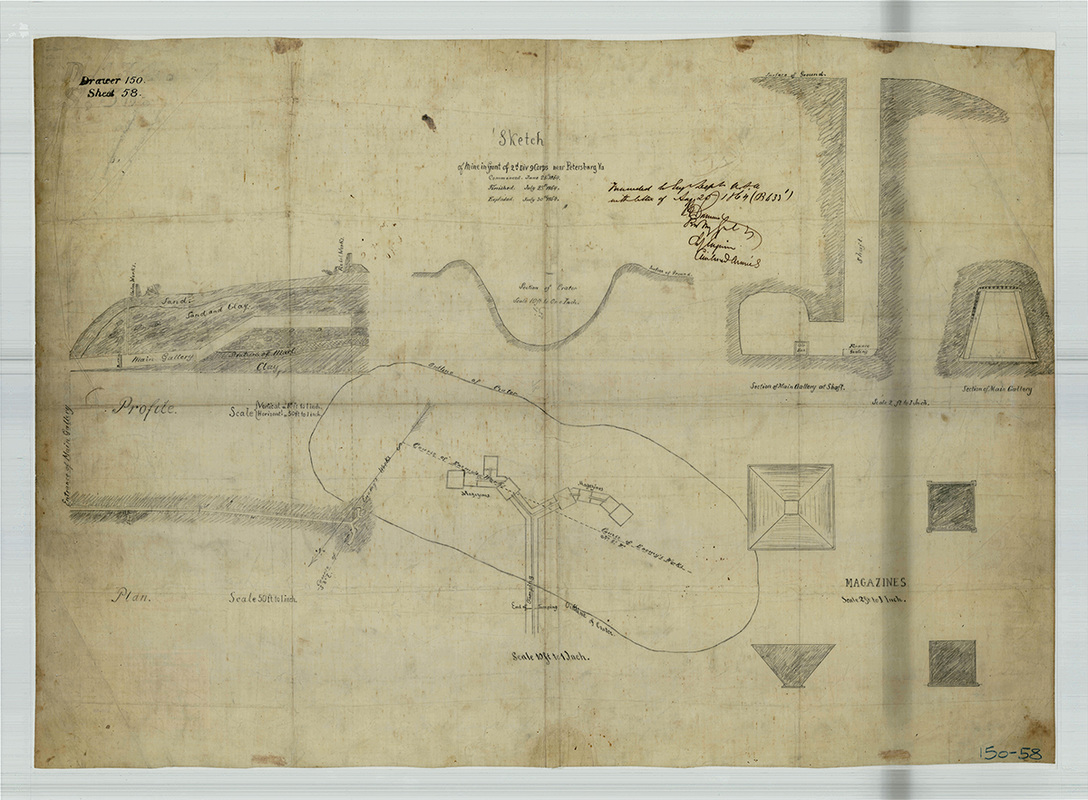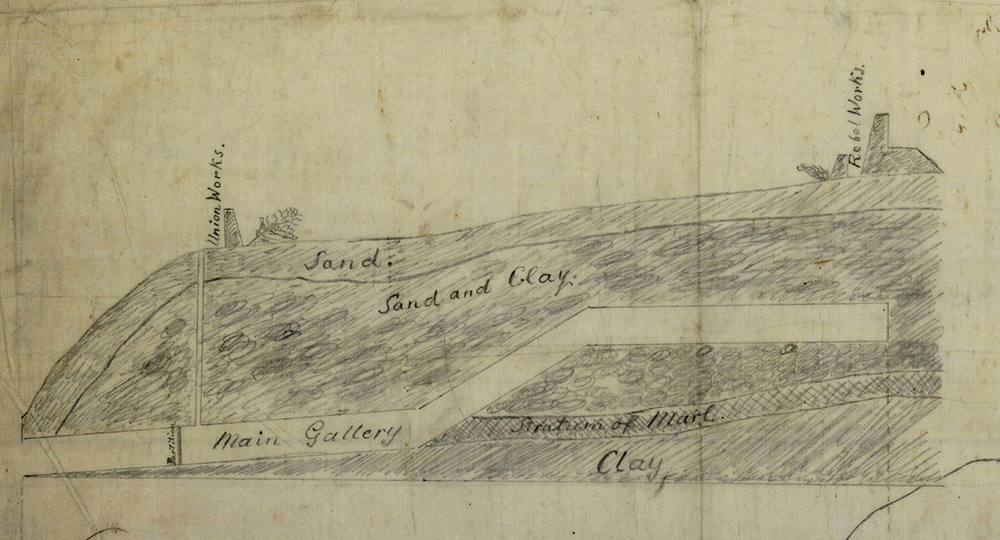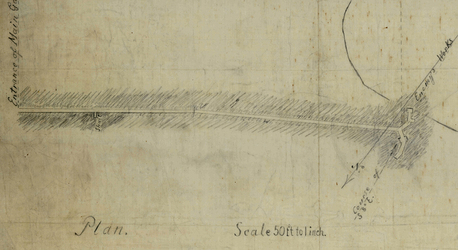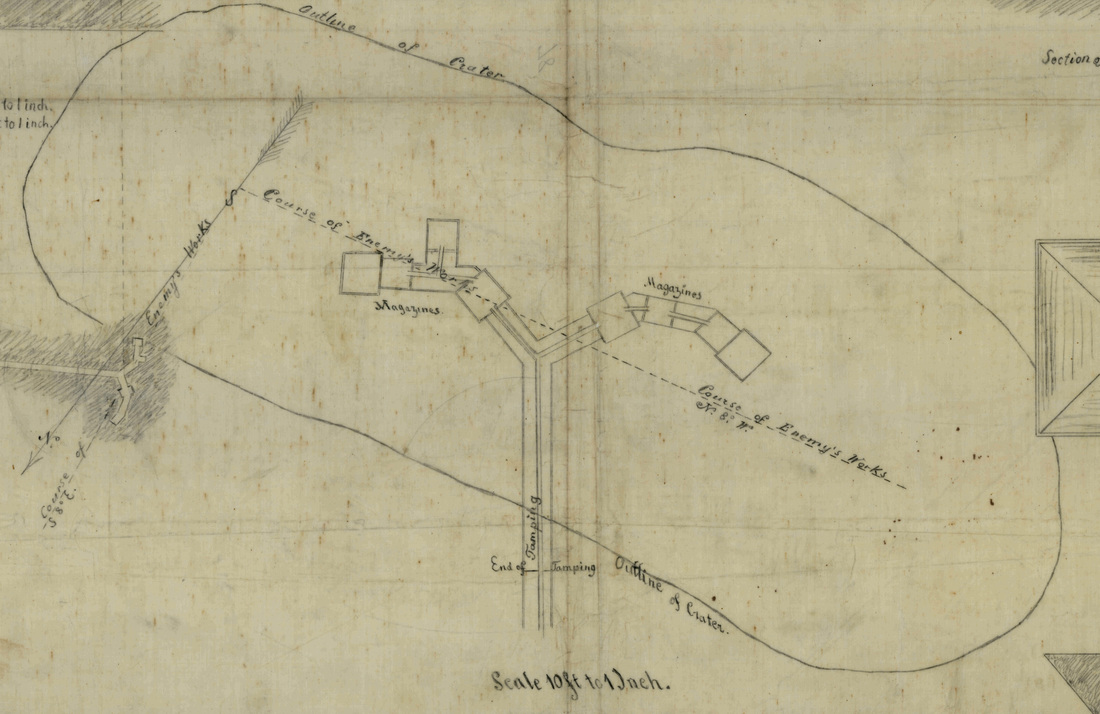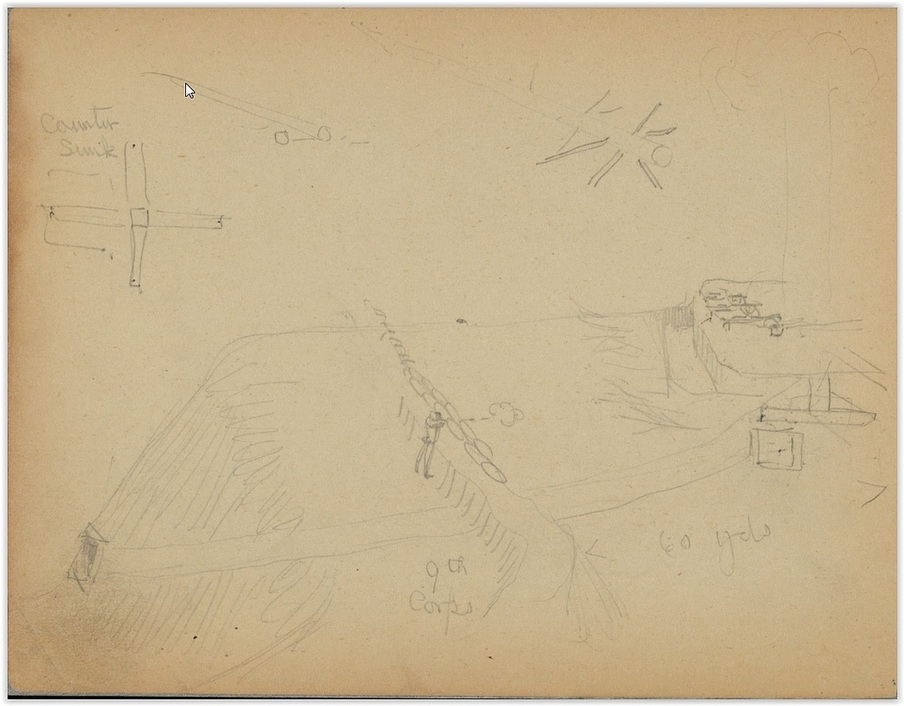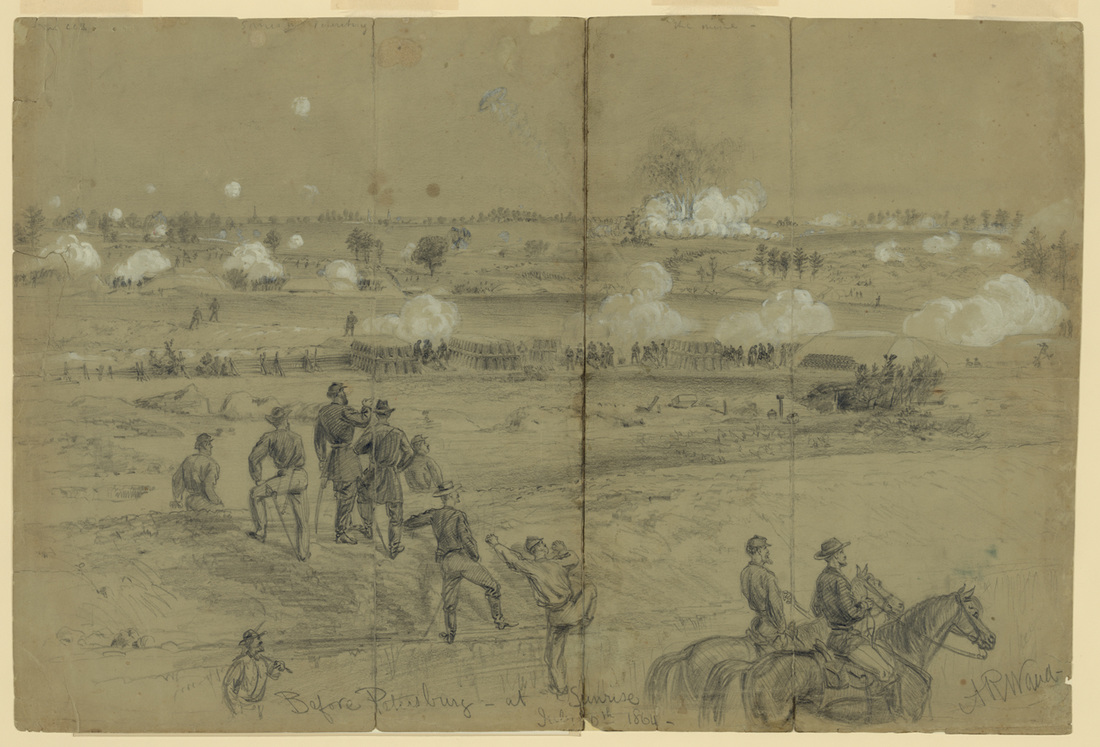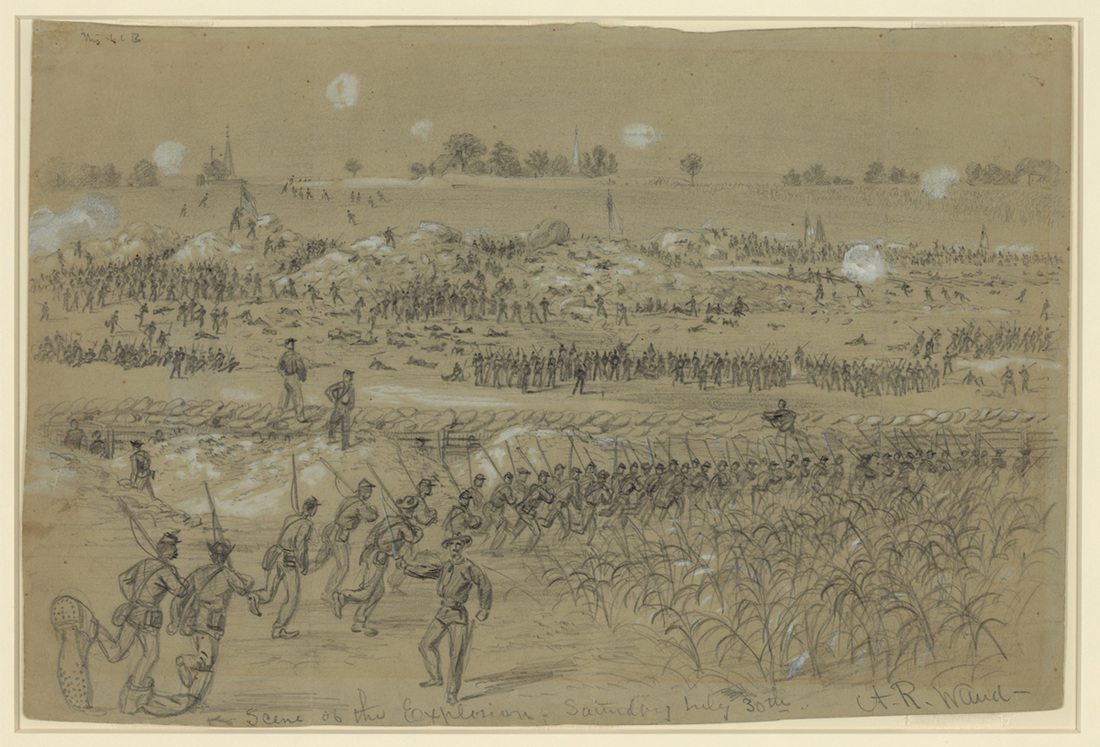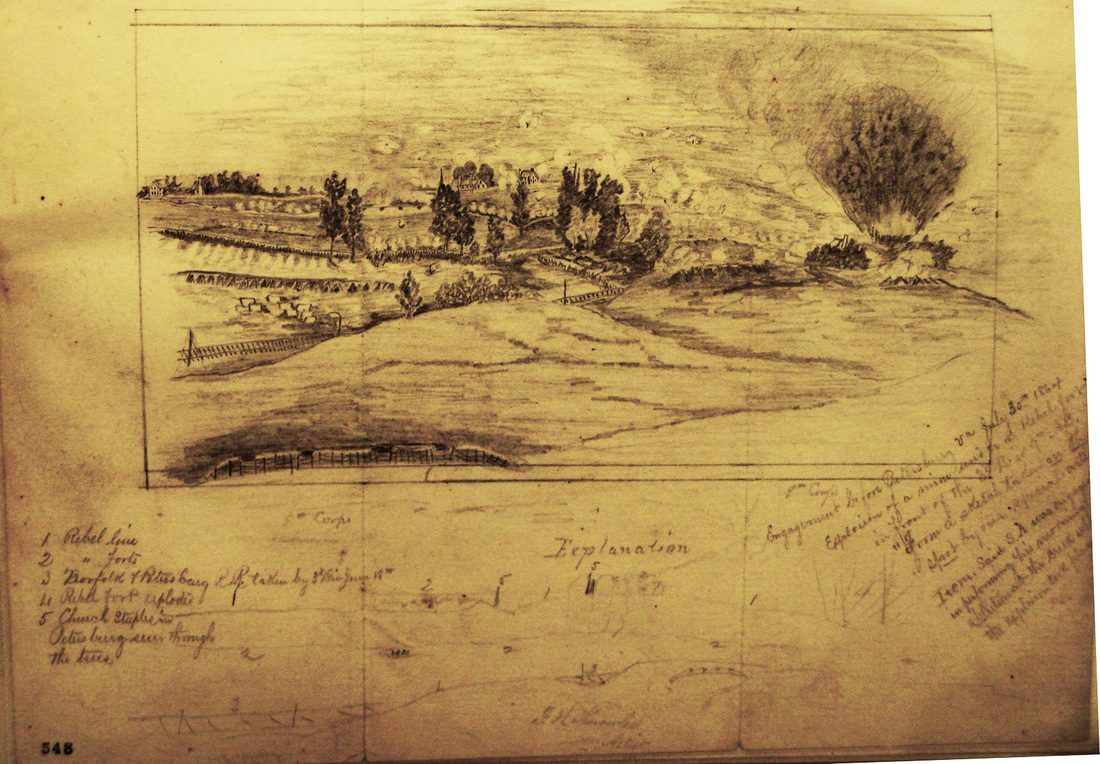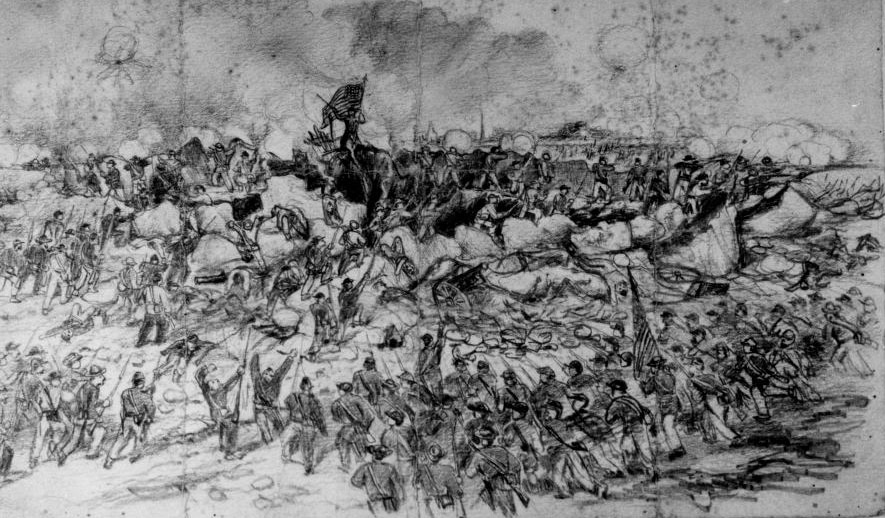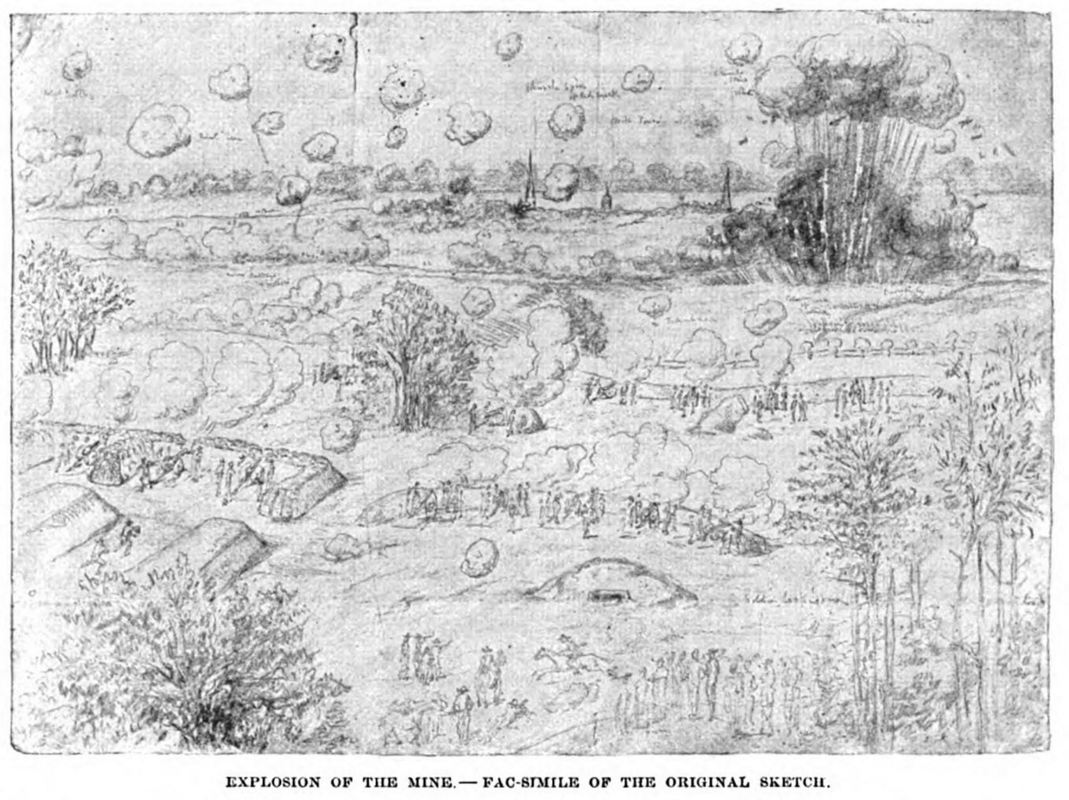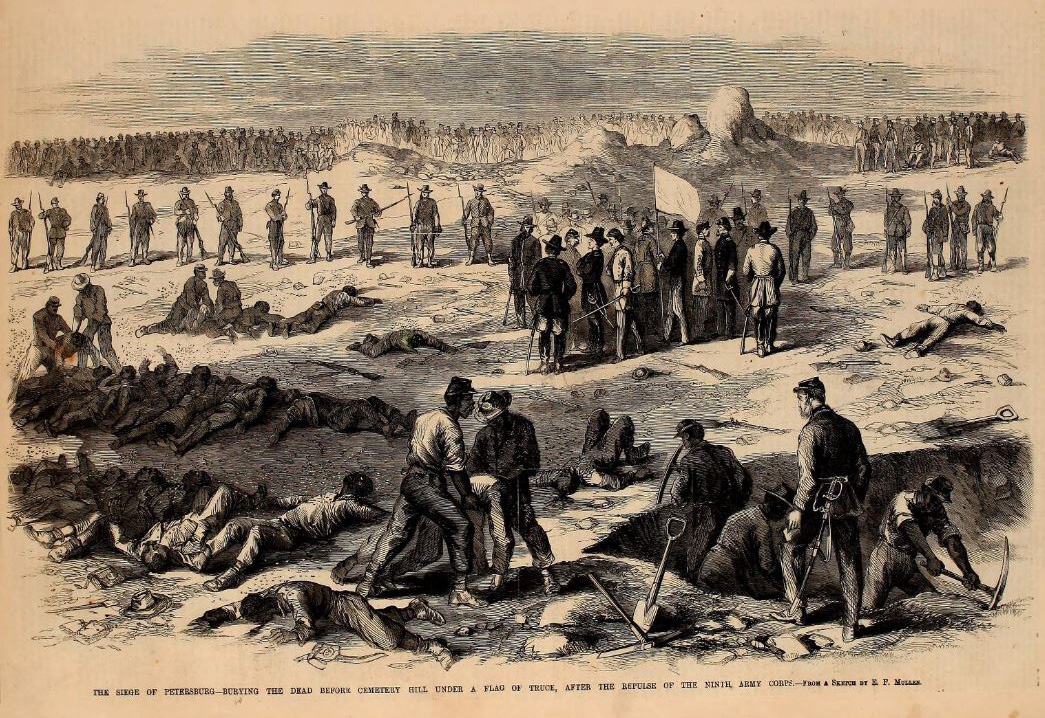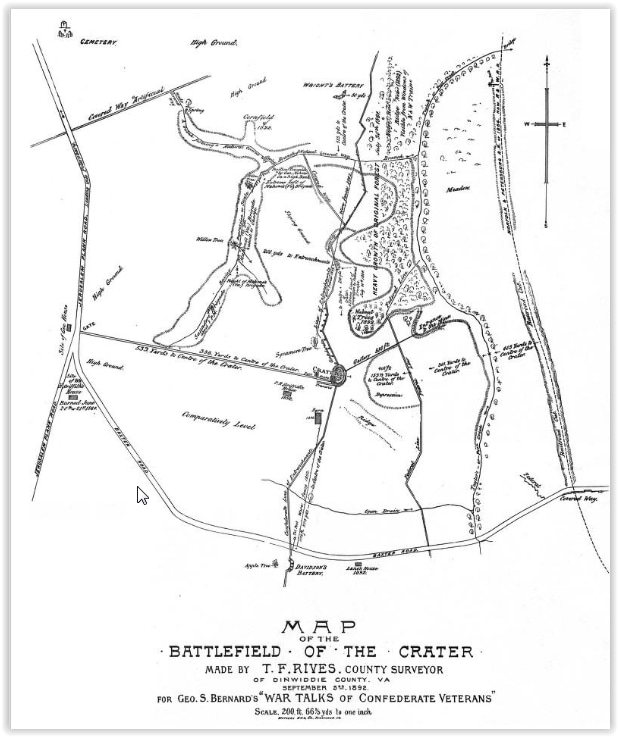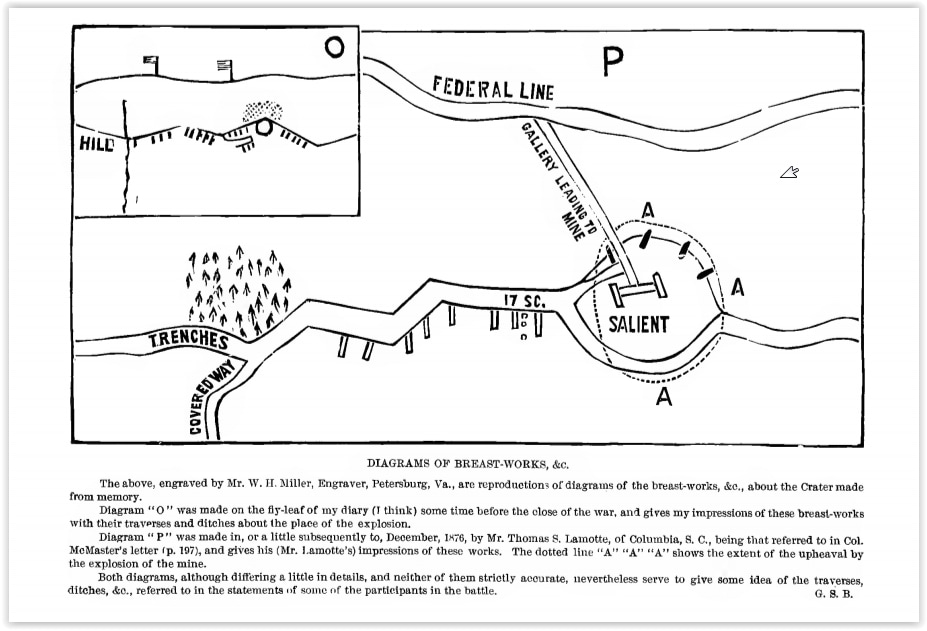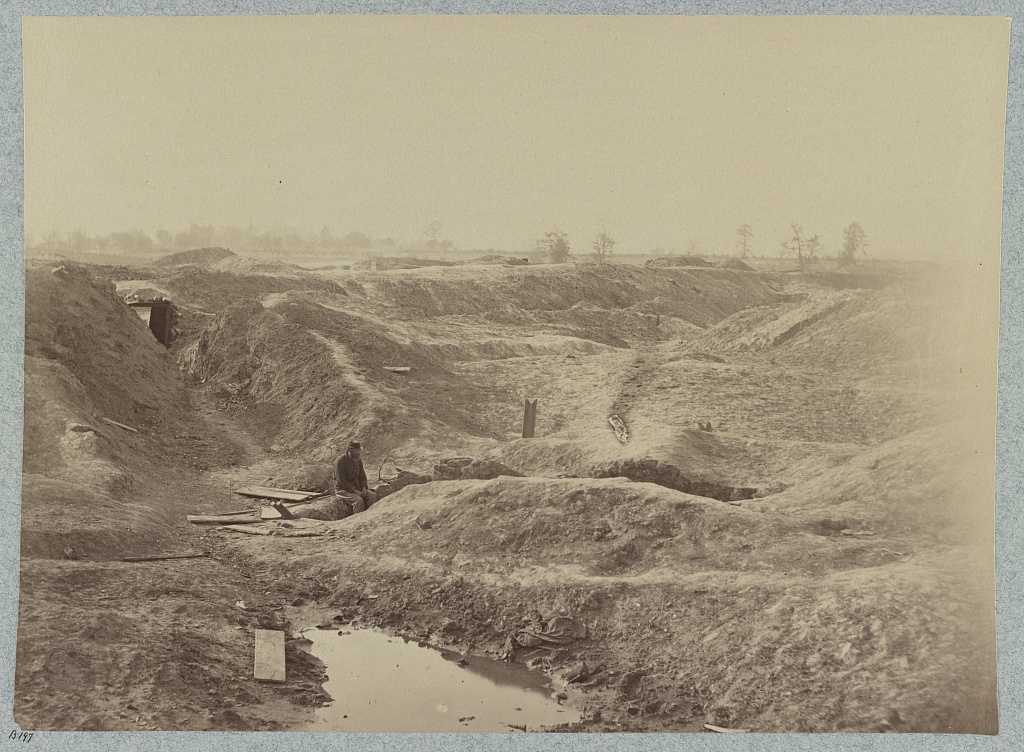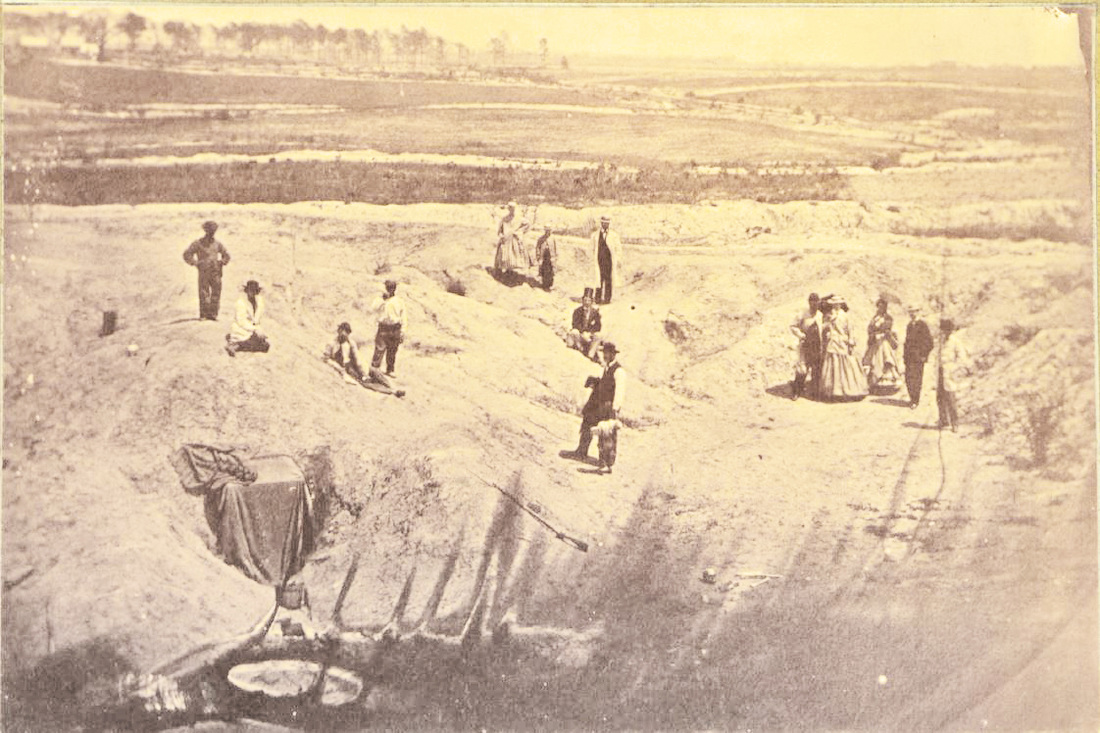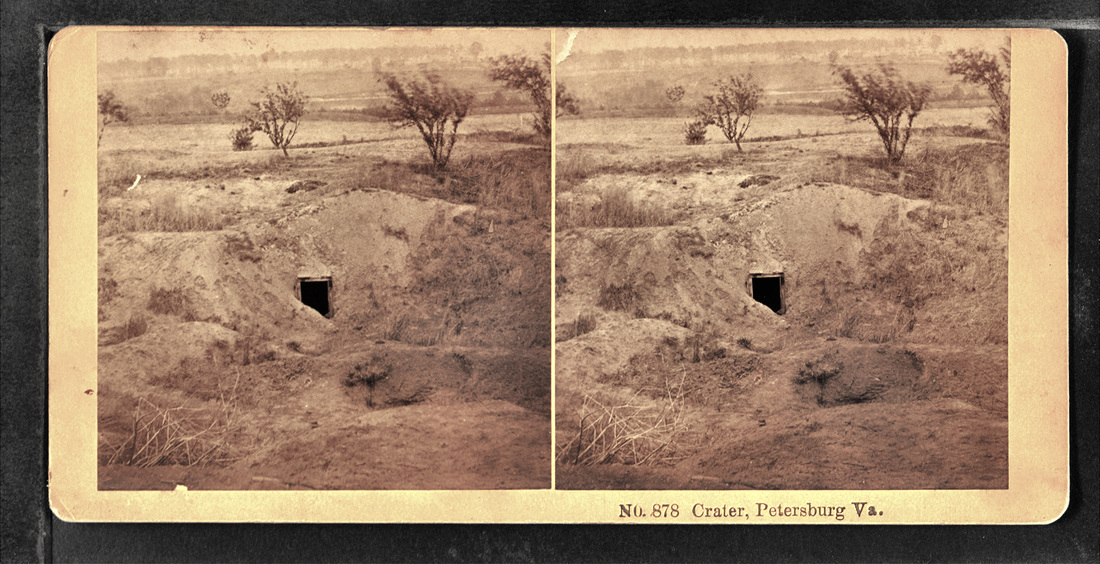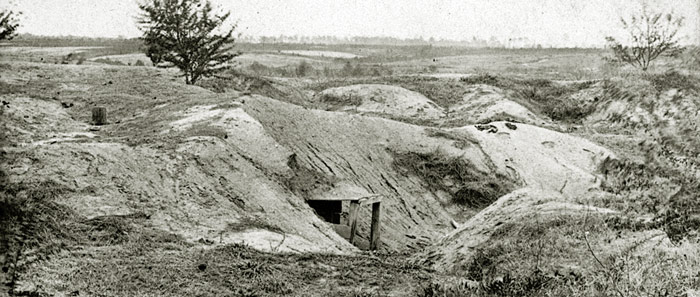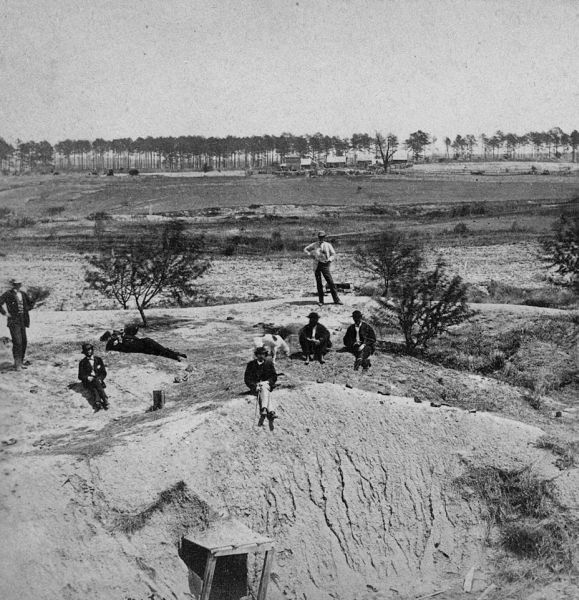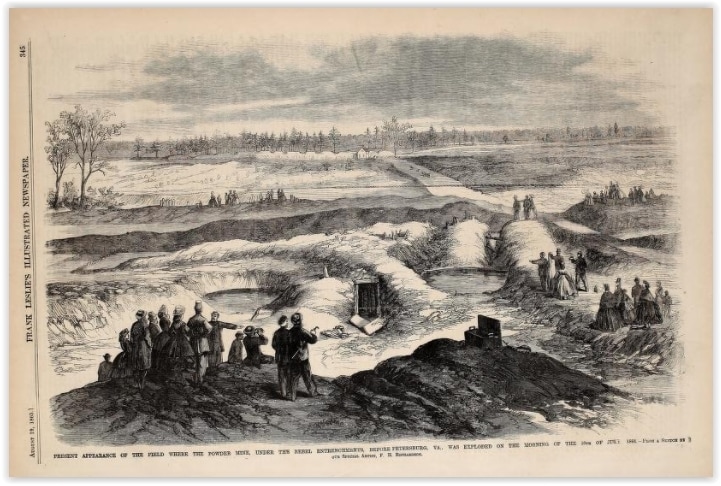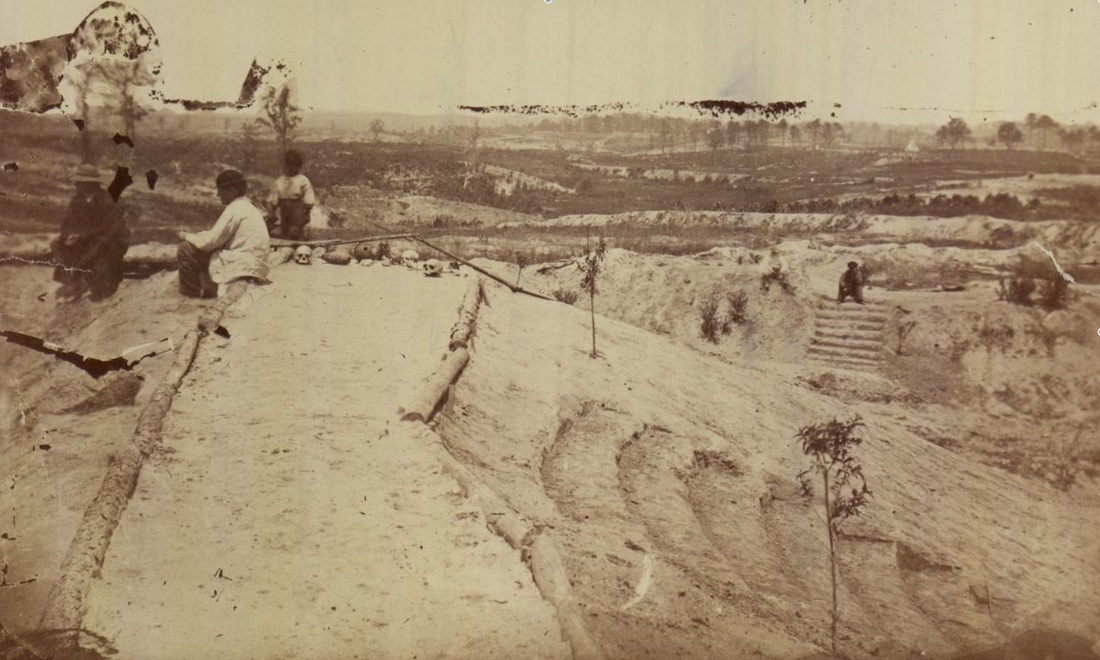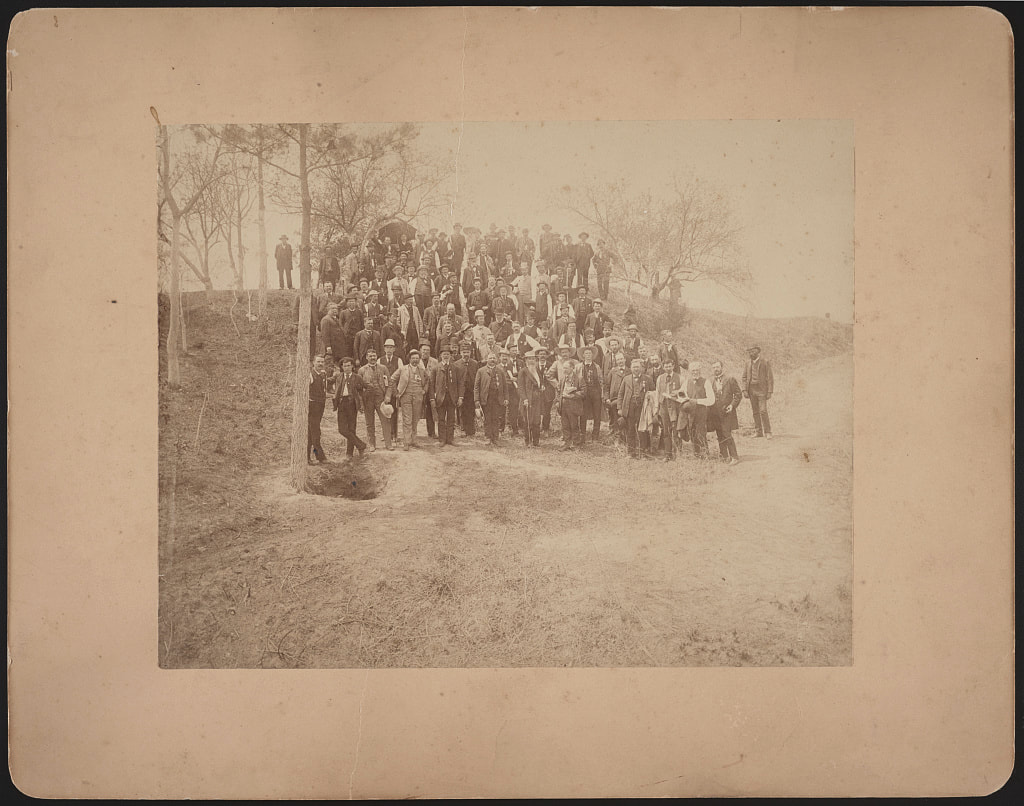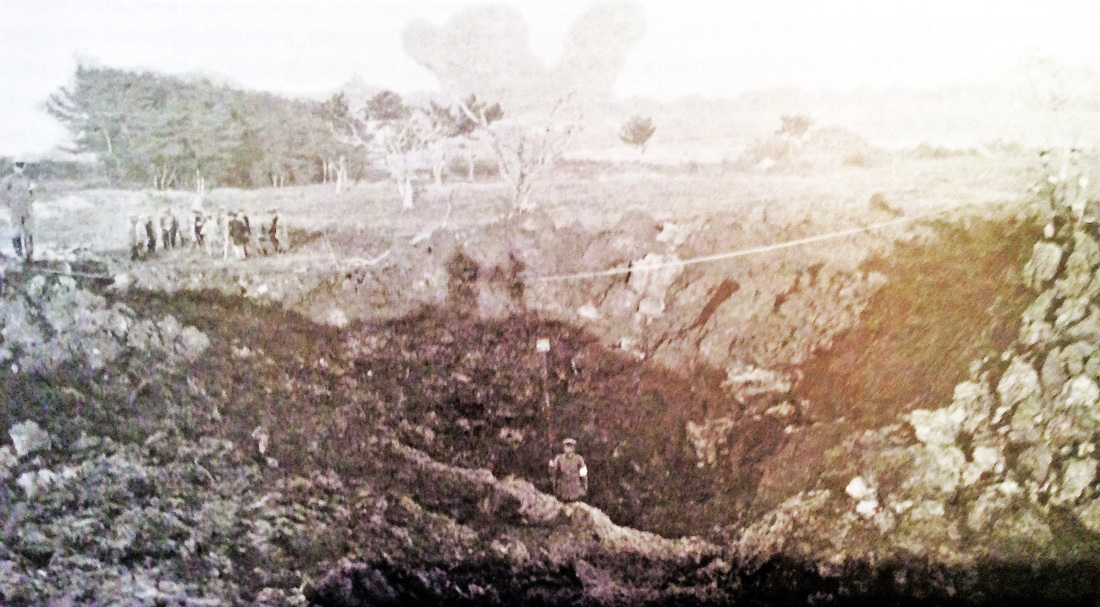"The Mine"
Barnard's Sketch of the Crater --National Archives
July 30th, 1864. Artists' Depictions of The Crater.
"After the repulse on the 30th, Gen. Burnside sent a flag of truce to ask leave to remove our wounded and bury our dead. On the 1st of August a reply was given and working parties, white and colored, sent out. Our Artist sketches the terrible scene. The bodies, after lying in a midsummer sun for two days were terribly altered; swarms of flies gathered around those remains of the gallant fellows who fell. The rebel works swarmed with men, and in front was a line of guards. In the intervening space, between this and our line, the men were busily at work, committing to earth the remains of their comrades. Near the guards our officers met rebel officers at the flag. Among the latter were Gen. Cooper and Gen. Mahone, among the former Gen. Ferrero. Our dead amounted to 300 in all, less than had been supposed. The time given for the truce was from five A.M. to nine, after which hostilities commenced, but in reality only random musketry firing was heard." -- Frank Leslie's Illustrated Newspaper, September 3, 1864.
 New York Public Library . The Confederates reestablished their line after the explosion.
New York Public Library . The Confederates reestablished their line after the explosion.

